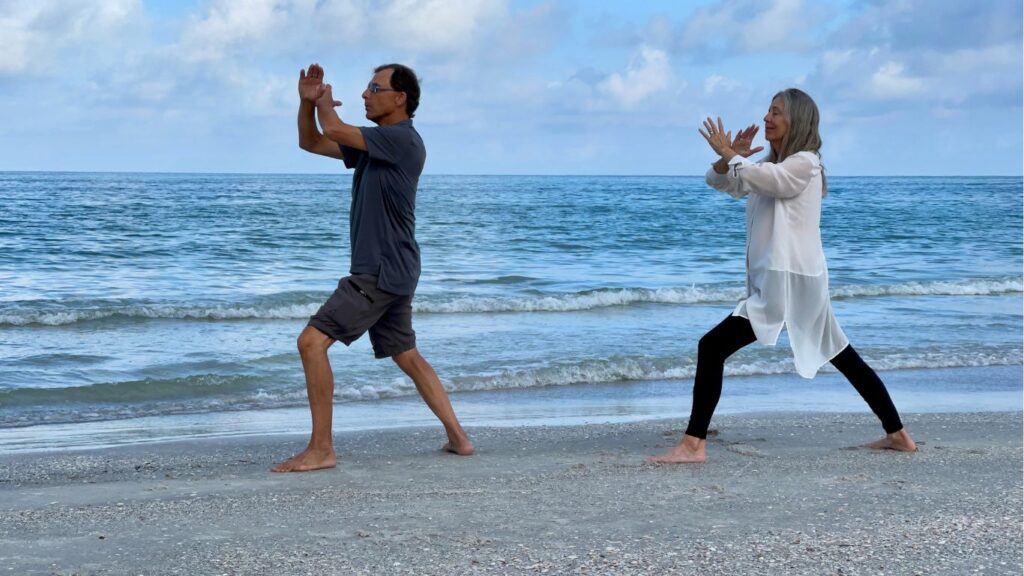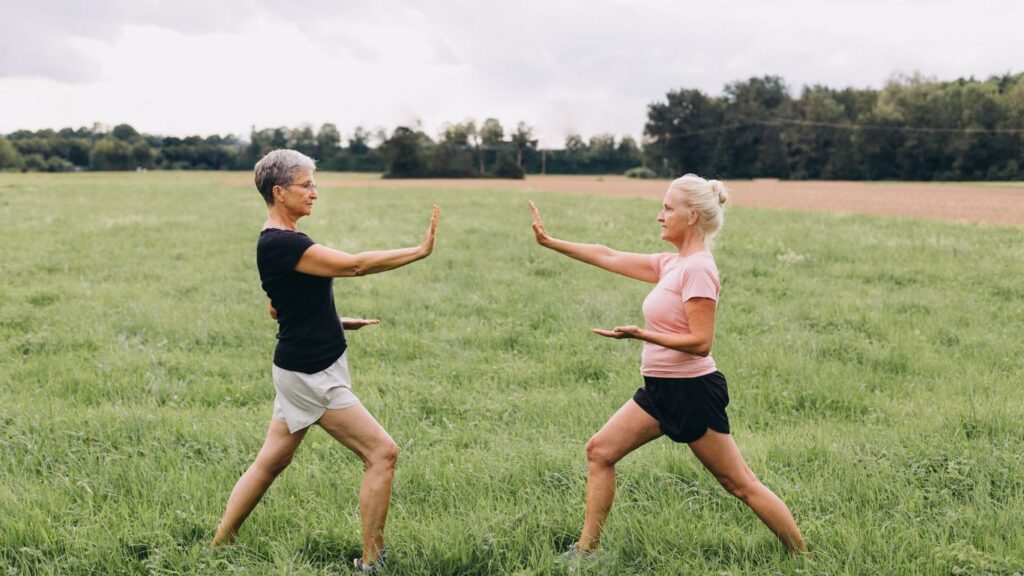Tai Chi, a traditional Chinese martial art, is celebrated for its gentle and slow movements, embodying a seamless blend of physical postures, meditation, and deliberate breath control. Originally developed for self-defense, Tai Chi has evolved into a graceful form of exercise often called “meditation in motion.” This nickname underscores its focus on mental presence and fluid motion, which harmonize to cultivate mindfulness and mental clarity. Practitioners of Tai Chi engage in a series of movements performed in a focused and slow manner, which helps enhance concentration and reduce mental stress. The repetitive nature of these movements promotes a deep meditative state, facilitating a clearer mind and improved emotional balance. As such, Tai Chi is not only a physical regimen but also a profound mental exercise, making it a powerful tool for those seeking to improve their overall mental health.
Tai Chi: A Moving Meditation for Mindfulness and Mental Clarity
Exploring Tai Chi and Its Principles
Tai Chi originated in ancient China, evolving over centuries from martial arts roots into the serene practice widely embraced today. Legend often credits the Taoist monk Zhang Sanfeng with its creation during the 12th century, although historical records linking Tai Chi to him are scant. The practice flourished, particularly in the 16th century, when it became known for its health and spiritual benefits as much as its defensive techniques.
The core principles of Tai Chi include controlled breathing, fluid movements, and mental concentration, all aimed at harmonizing the mind, body, and spirit. Controlled breathing is essential for directing the flow of Qi (vital energy), while fluid movements ensure a continuous flow of energy and strength throughout the body, promoting physical balance and flexibility. Mental concentration in Tai Chi focuses on connecting the body movements with the mind, enhancing mindfulness and meditative calm.
Several styles of Tai Chi have developed, the most prominent being Yang, Wu, and Chen. Each style maintains the practice’s meditative and health-oriented focus but differs slightly in techniques and execution. Yang style, for instance, emphasizes slow, steady movements, making it particularly popular for its health benefits. In contrast, Chen style incorporates more dynamic movements and pacing, adding a vigorous element to the practice. These styles underscore Tai Chi’s adaptability and its sustained focus on improving mental and physical well-being.
The Mindfulness Aspect of Tai Chi
Tai Chi, often described as “mindfulness in motion,” encourages practitioners to cultivate a state of mental presence and awareness through its slow, deliberate movements. Each posture flows into the next without pause, ensuring that the body is in constant, smooth motion. This continuous flow demands a high level of concentration and presence, effectively grounding practitioners in the moment and warding off distracting thoughts. The deep immersion in each movement helps to foster a meditative state, which is pivotal for achieving mental clarity and focus.

Central to the practice of Tai Chi is deep, rhythmic breathing which plays a critical role in enhancing mindfulness. As practitioners focus on their breath, aligning it with their movements, they enhance their body awareness and control. This integration of breath and movement helps to calm the mind, reduce stress, and improve oxygenation of the blood, further contributing to mental and physical health.
Several case studies highlight the mental benefits of Tai Chi. For instance, a study involving office workers who practiced Tai Chi regularly reported a significant reduction in stress and anxiety levels, along with improved mental clarity. Another anecdote involves an elderly woman who found that Tai Chi not only improved her balance but also her cognitive function, making her daily tasks easier and enhancing her concentration and memory. These examples underscore Tai Chi’s effectiveness in not only promoting physical health but also in enhancing mental well-being, illustrating its powerful impact as a holistic exercise for the mind and body.
Mental Health Benefits of Tai Chi
Tai Chi is widely recognized for its stress-reducing benefits. Through its slow, flowing movements and deep breathing techniques, Tai Chi helps lower cortisol, the body’s primary stress hormone. This reduction in cortisol is crucial for maintaining a relaxed state of mind and mitigating the physical impacts of stress. The practice promotes a sense of calm and balance, essential in today’s fast-paced world, where chronic stress can lead to various health issues.
The meditative quality of Tai Chi also plays a pivotal role in enhancing mental clarity. As practitioners focus on their movements and breathing, they engage in a form of active meditation. This focus clears the mind of clutter and distraction, which improves cognitive functions such as attention, problem-solving, and memory. By regularly engaging in Tai Chi, individuals can foster a sharper mind and a greater capacity for mental tasks.
Scientific studies have underscored Tai Chi’s effectiveness in improving mental health and cognitive functions. Research published in the Journal of Alzheimer’s Disease found that Tai Chi could slow the progression of cognitive decline in elderly patients with mild cognitive impairment. Another study highlighted in the American Journal of Geriatric Psychiatry showed significant improvements in mood and reduction in stress levels among Tai Chi participants compared to controls engaged in other forms of exercise. These studies provide compelling evidence of Tai Chi’s benefits, reinforcing its value as a therapeutic exercise for both the mind and body.
Practical Tips for Incorporating Tai Chi into Daily Life
Getting Started with Tai Chi: To begin practicing Tai Chi, start by finding a local class or instructor to ensure proper guidance and technique. Many community centers, gyms, and wellness studios offer Tai Chi classes suitable for all ages and fitness levels. For those who prefer learning at home, numerous online platforms and apps provide instructional videos ranging from beginner to advanced levels. Websites like YouTube also host free Tai Chi tutorials that are easy to follow.

Incorporating Tai Chi into Daily Routine: To integrate Tai Chi into your daily life, consider short sessions of about 10-15 minutes each morning or evening to establish a routine. This can be done in small spaces like a living room or garden. Regular practice, even in brief intervals, can significantly enhance mindfulness and contribute to mental wellness. Setting consistent times for practice can help make Tai Chi a calming and rejuvenating part of your everyday schedule.
Final Thoughts
Tai Chi stands as more than just a physical exercise; it is a profound practice that nurtures mindfulness and enhances mental clarity. By engaging in its slow, deliberate movements and deep rhythmic breathing, practitioners can achieve a meditative state that promotes a calm, focused mind. The benefits of Tai Chi, supported by scientific research, extend to stress reduction, improved mental health, and cognitive enhancement. As we continue to seek balance in our hectic lives, incorporating Tai Chi into our daily routine offers a valuable tool for maintaining our mental and physical health. Embrace Tai Chi and experience the transformative power of moving meditation.
Also read: Muay Thai: How It Enhances Mental Health and Physical Fitness
